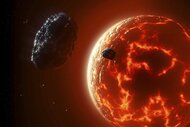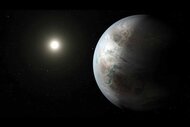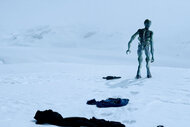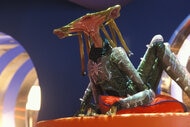Create a free profile to get unlimited access to exclusive videos, sweepstakes, and more!
Ghost planet
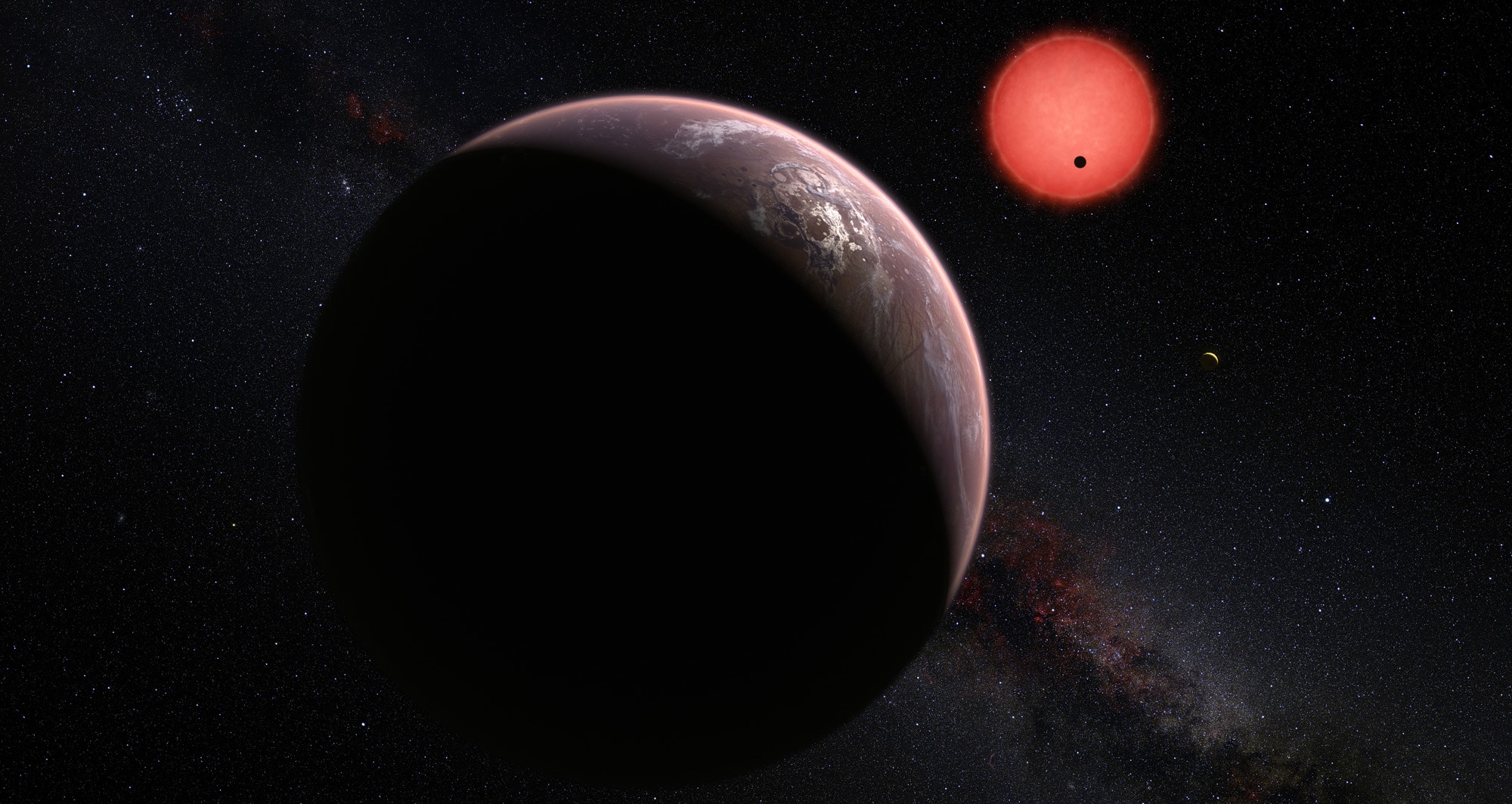
Hey, did you hear that astronomers have found a third exoplanet around the star GJ 832 (also sometimes called Gliese 832), and that it’s Earth-like?
Well, don’t get too excited. If you read that in an article, that article is wrong.
This story is aggravating. It’s a tale of real science that’s being reported badly.
The real science is pretty cool. The star GJ 832 is a red dwarf, with a little less than half the mass of the Sun. The amount of light a star emits is pretty heavily dependent on its mass, and since this star is a lightweight, it’s faint; even though it’s only 16 light years away (that’s really close as things go!), it’s so faint you’d need binoculars at least to see it.
But, despite its low wattage, it hosts at least two planets orbiting it. They were discovered using the radial velocity method: As they orbit the star, their own gravity tugs on the star, so it makes little circles as they make big circles around it. The outer planet, GJ 832b, is about 2/3rd the mass of Jupiter, and takes over 9 years to orbit the star at its distance of over 500 million km out. The other exoplanet, GJK 832c, has a little more than 5 times the mass of Earth and orbits much closer in, about 24 million kilometers from the star, and takes just 35 days to circle it.
What’s interesting is that huge gap between the planets. There’s 500 million kilometers of empty space between them! That’s plenty of room for another planet to fit in.
So, astronomers decided to see if it’s physically possible to have one in there. Using sophisticated computer models, they simulated the system as it is with the two planets known to exist, then added a third in between the two to see if all three could have stable orbits. This depends on many things, including the mass of the middle planet, the size of its orbit, and its orbital shape. If it has enough mass and gets too close to one of the others two planets, its gravity could disrupt the entire system.
So, they allowed this simulated middle planet to have a range of characteristics, and ran the computer models to see what possibilities are allowed for stable orbits, thus determining what this potential planet might be like. I’ll note that the star is probably quite old, roughly 6 billion years, so the two known planets must have stable orbits to have lasted this long.
What they found is interesting. All the parameters depend on one another (the smaller the mass, for example, the closer it can get to the other two planets without adversely affecting them), but, generally speaking, they found that a planet with a mass less than 15 times Earth’s can have a stable orbit from about 38 million kilometers out to about 300 million kilometers (depending on the mass)
Interestingly, the inner edge of that stability zone also (slightly) overlaps the star’s habitability zone, where the temperature of a planet could be right to have liquid water on its surface. So, it’s possible that, if such a third planet exists, it could be Earth-sized, and even Earth-like! It would be very difficult to detect using current tech, but not necessarily impossible. It’s certainly worth investigating.
But this is where the story goes off the rails. The science is great, but the reporting has been, in some case, less than, um, stellar.
The press release at the University of Texas Arlington’s website is OK. The headline reads, “UTA Astrophysicists predict Earth-like Planet May Exist in Star System Only 16 Light Years Away”. I’d have been a little more circumspect writing that; while it’s technically true the planet — if it exists — might be like Earth, odds are it isn’t (the planet’s possible location only overlaps the habitable zone a little bit). But that’s a quibble.
However, other websites picked up the news and distorted it beyond truth. For example, Sci News had a story on this with the headline, “Gliese 832 Hosts at Least Three Exoplanets, Astrophysicists Say,” which is obviously incorrect. The lede (the synopsis line under the headline) reads, “An international team of researchers… has spotted signs of an additional exoplanet in the Gliese 832 planetary system” and that’s just wrong. Plain and simple. Remember, the planet was only simulated to see if it could exist, and no observations have been yet made to see if it’s actually there.
If you think that’s bad, the website Room (The Space Journal) has an article with this galling headline: “New Earth-like planet found in GJ 832 planetary system”. Yikes. Most of the article is OK, but one paragraph starts out thusly:
“The yet unnamed planet discovered by an international trio of astronomers whose lead author S. Satyal is based at the University of Texas, state in their research paper that the planet was found using numerical simulations from data obtained from GJ 832b and GJ 832c…”
Oof. No, and no. It wasn’t discovered, and the team never said they found it. And calling it “unnamed” really makes it sound like it’s out there, we found it, and it’s just awaiting something for us to call it.
A third site, Futurism, has this headline for their article on GJ 832: “Astrophysicists Believe They’ve Found Another Earth-like Planet in a Nearby Star System”. I think you can spot the problem (plus, “another” one? We haven’t yet found any Earth-like planets around other stars, just ones that maybe are). Another, Space Daily, ran their story with the headline, “Earth-like planet in star system only 16 light years away”.
At this point I stopped looking; I imagine there are more misleading or outright wrong articles about this story out there. To be fair, the authors of the study used the title “Dynamics of a Probable Earth-mass Planet in GJ 832 System”. I think the word “possible” would’ve been better than “probable”; while it may very well exist, it’s also entirely possible no planet is there at all. We just don’t know. But “probable” doesn’t mean “existing”, so the breathless and in some cases grossly incorrect reporting on this research is entirely on the heads of the writers and editors who posted them.
That’s why this is aggravating. The work done was pretty cool, quite interesting, and has a lot of usefulness for future observations of exoplanets. Astronomers are making amazing progress in the detection of these alien worlds, and the hope is that, someday very soon, we’ll find another planet much like our own blue-green world. We’ve found some candidates for sure, but nothing clinched just yet. And when we do it’ll be big news. I just hope that the excitement it generates won’t be diminished in the public mind due to false reports of such discoveries until then.

